Top 10 Fibre Rich FoodFibre is incredibly crucial, and exits your stomach undigested and travels to your colon, where it nourishes good gut flora and has a variety of positive health effects. Additionally, some fibres may help with weight loss, blood sugar control, and constipation. Every 1,000 calories you take each day should be accompanied by 14 grammes of fibre, according to the Academy of Nutrition and Dietetics. For women, this equals about 24 grammes of fibre and for men, about 38 grammes. Sadly, it is estimated that 95% of American adults and kids do not consume the required amount of fibre each day. The average daily fibre consumption in America is thought to be 16.2 grammes. Fortunately, increasing your intake of fibre is simple. Just include foods high in fibre in your diet. 1. Beans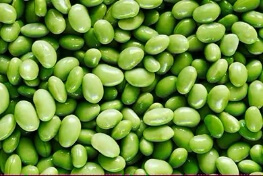
By including lentils, pulses and other beans into salads, soups, and stews, you can easily sneak fibre into your diet plan. Some beans, like the edamame, a cooked soybean, are even excellent sources of fibre. Shelled edamame contains about 9 g of fibre in per serving. They both offer a plant protein source. A study found that some bakers have begun using beans or bean flours in their baked goods, and that this can still produce cakes of great quality. Beans are generally understood to be the pod-borne seeds of leguminous plants, except for lentils, lupins, peanuts, and a few other varieties of legumes. The cultivation of beans dates back thousands of years. They are now a significant source of food on a global scale. In the US, pinto, black, navy, fava, and kidney beans are popular. The nutritional characteristics of various beans vary. A good amount of zinc, copper, manganese, selenium, and vitamins B1, B6, E, and K are also present in beans. One of the foods with the highest nutrient density is pinto beans, which have 245 calories and 171 grammes of fat per cup. There is a tonne of additional remarkable types. Among plant foods, beans stand out because of their high protein content. They are therefore regarded by vegetarians as a crucial source of protein. 2. Broccoli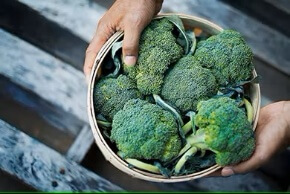
One title for this vegetable might be "fibre veggie." Its status as a cruciferous vegetable, which means that it is a member of the same plant genus as kale, cauliflower, and cabbage, makes it a source of various nutrients in addition to fibre. According to studies, the 5 grammes of fibre in one cup of broccoli can help keep the bacteria in your gut in balance and healthy. Raw broccoli has a water content of about 90%, 7% carbohydrates, 3% protein, and essentially negligible fat. With only 31 calories per cup, broccoli has an extremely low-calorie content (91 grams). The main carbohydrates in broccoli are fibre and sugars. Fructose, glucose, and sucrose are the main sugars, with trace amounts of lactose and maltose. However, there are just 3.5 grammes of digestible carbs in one cup, making the total amount of carbs quite low (91 grams). 3. Berries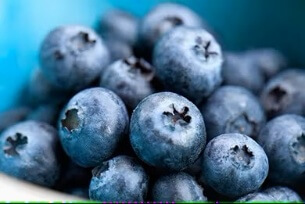
Berries include a lot of fibre in addition to their well-known antioxidant content. One cup of fresh berries contains about 4 to 5 g of fibre, while one cup of frozen, unsweetened blueberries contains almost same. Strawberries, blackberries, and raspberries are also fantastic sources of fibre. In fact, one of the benefits of berries is that they naturally contain few calories. Berries are incredibly nutrient-dense and low in calories. They are rich in antioxidants and include several vitamins and minerals. Strawberries have a high vitamin C content. In fact, a whopping 1 cup (150 grammes) of strawberries contains 150% of the recommended daily intake of vitamin C. All berries are identical in terms of their vitamin and mineral content, except for vitamin C. Berries are among the lowest-calorie fruits because 3.5 ounces (100 grammes) of them only contain 32 calories for strawberries and 57 calories for blueberries. 4. Avocados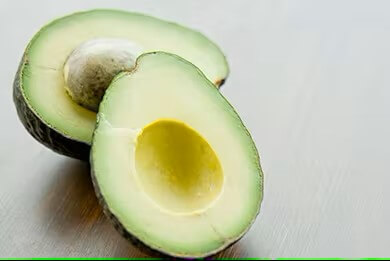
Avocados are a great addition to toast, salads, entrees, and eggs. In addition, one cup of avocado has 10 grammes of fibre in addition to the substantial quantity of beneficial fats. About 240 calories, 13 grammes of carbohydrates, 3 grammes of protein, 22 grammes of fat (15 grammes of monounsaturated fat, 4 grammes of polyunsaturated fat, and 3 grammes of saturated fat), 10 grammes of fibre, and 11 milligrams of sodium are found in one medium avocado. Avocados have zero cholesterol and a low salt content. Avocados include several nutrients, including as carotenoids, monounsaturated fats, potassium, and fibre, which have been linked to a lower risk of developing chronic diseases, particularly when consumed as part of a nutritious and well-balanced diet. Avocados' nutritional composition is compatible with diets that promote health, like the Mediterranean and DASH diets. The research cited below tries to include studies that were not supported by the avocado business, which funds most of the published health research on avocados. 5. Popcorn
When consumed organically and without butter, as it is at the movies, one cup of popcorn, a whole grain, offers one gramme of fibre and can sate appetites. It was even complimented by the King of Snack Foods. One of the most popular and healthiest snack foods in the world is popcorn. It has several health advantages and is packed with crucial nutrients. However, it can lead to overeating when made with excessive amounts of fat, sugar, and salt. It is crucial to properly cook your popcorn for this reason. The way you prepare food will determine how healthy or unhealthy it is. A unique variety of corn called popcorn "pops" when heated. Each kernel contains a little amount of water in the middle that swells when heated, eventually causing the kernel to explode. 6. Whole Grains
Real whole grains, like brown rice, oats, whole wheat pasta, and 100% whole wheat bread, contain fibre. This is wonderful news for bread lovers. One thing to be careful about is: According to the Food and Drug Administration, a food must mention whole grains as the first ingredient on the label to be recognised as a genuine whole grain. In contrast to refined grains, which are depleted of important nutrients during the refining process, whole grains provide a "full bundle" of health advantages. The bran, germ, and endosperm are the three components that make up each whole grain kernel. Health-improving nutrients are present in each segment. The outer, fibre-rich layer known as the bran contains antioxidants, phytochemicals, B vitamins, iron, copper, zinc, and magnesium. Plants naturally contain chemical molecules called phytochemicals, which have been studied for their potential to prevent disease. The germ, the centre of the seed where growth takes place, is a rich source of phytochemicals, antioxidants, vitamin E, and healthy fats. The innermost layer, called the endosperm, contains protein, some B vitamins, and trace amounts of carbs. 7. Apples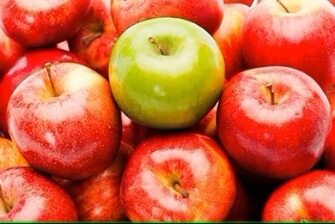
The saying "an apple a day keeps the doctor away" may not always be true but eating more apples can improve your intake of fibre, claims a study. One apple has 4 grammes of fibre, depending on its size. Naturally, they also make for a delectable and crunchy snack. Quercetin and pectin, which are both abundant in apples, are thought to be responsible for the fruit's health advantages. A naturally occurring plant molecule called a flavonoid, quercetin possesses anti-inflammatory and antioxidant properties. A soluble fibre called pectin may help reduce constipation and have a negligible impact on decreasing LDL, or "bad" cholesterol. Additionally, pectin is digested by helpful bacteria in the colon, producing short chain fatty acids that may help prevent chronic illnesses like some types of cancer and bowel issues. 8. Dried Fruits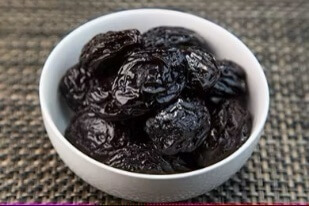
Dried fruits like figs, prunes, and dates are recommended for persons who occasionally experience constipation since they dramatically boost your intake of fibre. Naturally occurring in many fruits is sorbitol, a sugar that may help your bowels and make you feel more comfortable. Try a small helping, though, and wait until you've thoroughly digested them before indulging in an excessive amount as eating too many can result in cramps or diarrhoea. Fruit that has practically all its water content evaporated during drying is referred to as dried fruit. During this process, the fruit contracts, leaving behind a tiny, high-energy dried fruit. The most popular variety is raisins, which are then followed by dates, prunes, figs, and apricots. There are many dried fruit kinds available, some of which come in candied form (sugar coated). Mangoes, pineapples, cranberries, bananas, and apples are a few of these. When travelling for a long time without access to refrigeration, dried fruit can be a useful snack because it can be maintained for a much longer period than fresh fruit. 9. Potatoes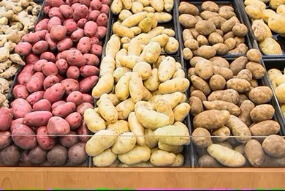
About 3 grammes of fibre can be found in a small potato with skin; sweet potatoes, red potatoes, purple potatoes, and even plain white potatoes are also fantastic sources of fibre. Fries and chips, to mention a couple, are some of the bad influences that the vegetable has a bad reputation for hanging out with. When they aren't deep-fried and salted, potatoes can, nonetheless, provide a variety of benefits. Potatoes are underground tubers that develop on the Solanum tuberosum plant's roots. This plant is related to tobacco and tomatoes and is a member of the nightshade family. Potatoes are a South American native that were introduced to Europe in the sixteenth century and are today cultivated in various variants all over the world. They are usually offered as a side dish or snack and are typically consumed boiled, roasted, or fried. French fries, potato chips, and potato flour are typical items made from potatoes. 10. Nuts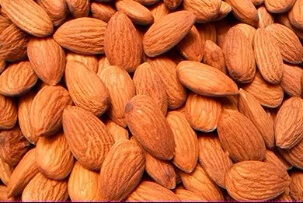
Sunflower seeds and almonds both provide more than 3 grammes of fibre per serving, making them excellent sources of fibre in addition to protein and good fats. They can assist you in consuming the 25 grammes for women and 38 grammes for men of fibre per day recommended by the FDA. Nuts that have not yet been packed are preferred to those that are raw or dry-roasted. There is a large quantity of fibre in nut butters as well. They are typically prepared using oils, which can result in the addition of extra calories.
Next TopicTop 10 Frauds in India
|
 For Videos Join Our Youtube Channel: Join Now
For Videos Join Our Youtube Channel: Join Now
Feedback
- Send your Feedback to [email protected]
Help Others, Please Share










